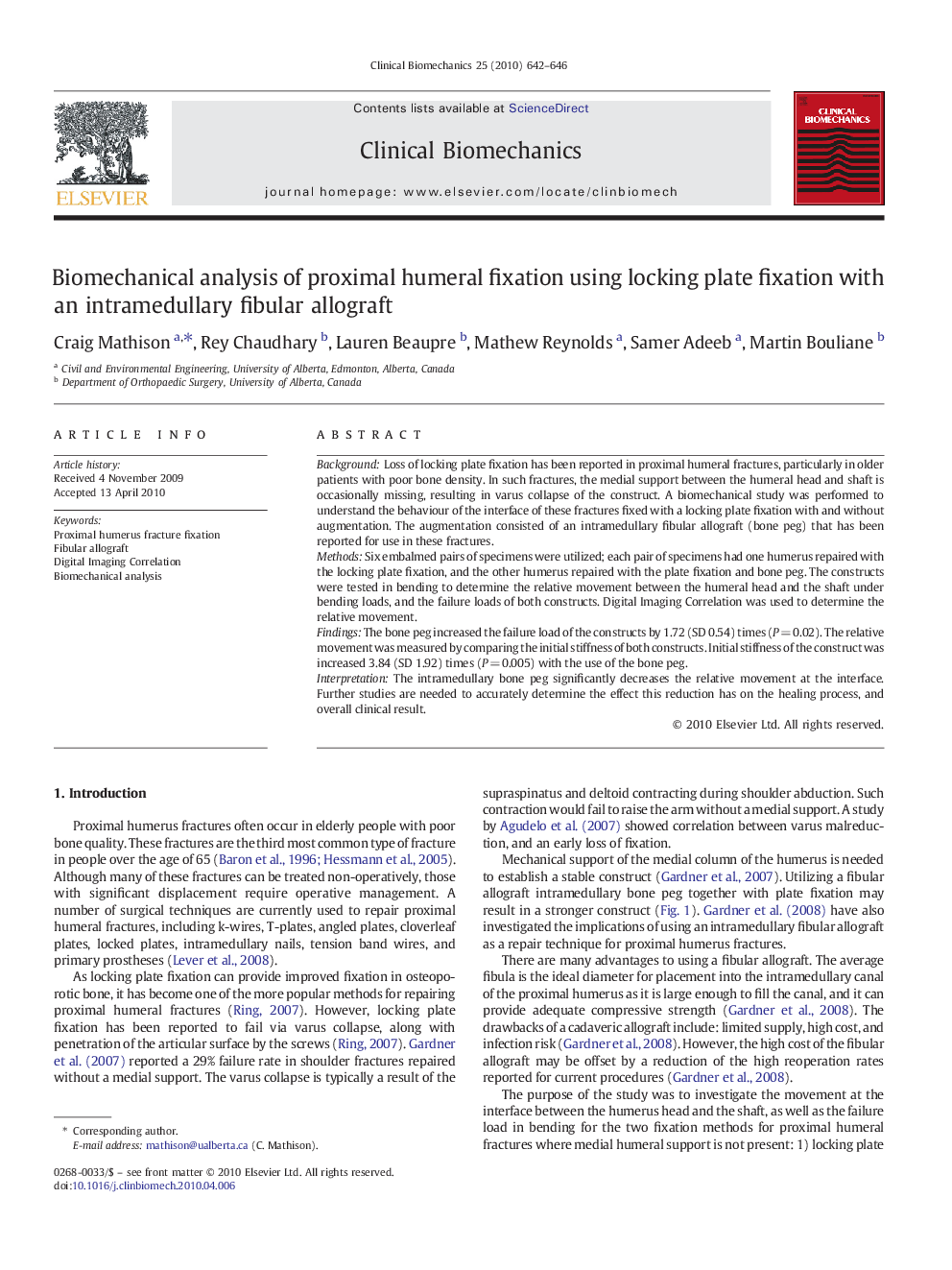| Article ID | Journal | Published Year | Pages | File Type |
|---|---|---|---|---|
| 4050938 | Clinical Biomechanics | 2010 | 5 Pages |
BackgroundLoss of locking plate fixation has been reported in proximal humeral fractures, particularly in older patients with poor bone density. In such fractures, the medial support between the humeral head and shaft is occasionally missing, resulting in varus collapse of the construct. A biomechanical study was performed to understand the behaviour of the interface of these fractures fixed with a locking plate fixation with and without augmentation. The augmentation consisted of an intramedullary fibular allograft (bone peg) that has been reported for use in these fractures.MethodsSix embalmed pairs of specimens were utilized; each pair of specimens had one humerus repaired with the locking plate fixation, and the other humerus repaired with the plate fixation and bone peg. The constructs were tested in bending to determine the relative movement between the humeral head and the shaft under bending loads, and the failure loads of both constructs. Digital Imaging Correlation was used to determine the relative movement.FindingsThe bone peg increased the failure load of the constructs by 1.72 (SD 0.54) times (P = 0.02). The relative movement was measured by comparing the initial stiffness of both constructs. Initial stiffness of the construct was increased 3.84 (SD 1.92) times (P = 0.005) with the use of the bone peg.InterpretationThe intramedullary bone peg significantly decreases the relative movement at the interface. Further studies are needed to accurately determine the effect this reduction has on the healing process, and overall clinical result.
